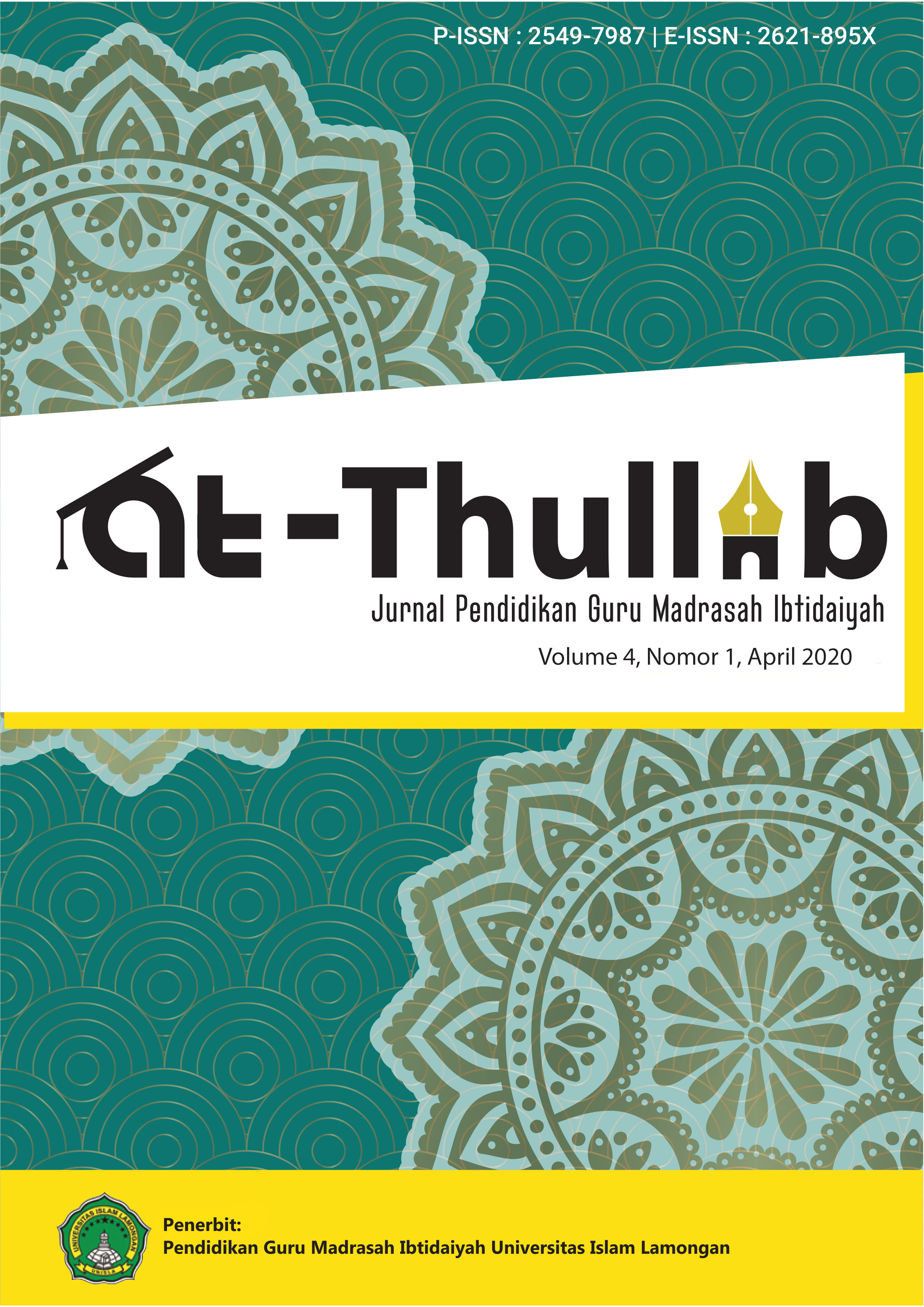ANALISIS KREATIVITAS SISWA KELAS 3 DALAM MENGELOLA SAMPAH PLASTIK PADA PELAJARAN PLH DI SD NEGERI 1 WONOKROMO KECAMATAN GONDANG
DOI:
https://doi.org/10.30736/atl.v4i1.117Abstract
The Creativity is very needed to manage plastic waste become something new and can be re-used, because in Wonokromo district at Tulungagung was still many plastics waste that wasted and just fired, finally can be caused air-polution. The purpose of this research to know there is any creativity from students to manage plastic waste to be creative product that have a new value. Creative product that resulted from students at class 3 at SDN 1 Wonokromo valued with three criterias, it is: newness, fission, and detailed. Data collection methods that used is observation, interview, and documentation. The instrument that used is observation with ratting scale in create a data, and also use data of interview and documentation to support a data that a result of researcher. From this analysis data that result show that there is any creativity of students in class 3 at SDN 1 Wonokromo is very good because from fourteen students only one student that have a good criteria. The higher presentation is 94% and the lower is 68%.
Keywords: creativity, creative products, plastic wasteDownloads
References
Budiono. (2017). Pemanfaatan Limbah Botol Plastik Menjadi Prakarya Boneka Pinguinsebagai Bentuk Implementasi Dari Pendidikan Lingkungan Hidup, 2(2).
Cinthya, A., & Kusuma, H. B. (2018). Botol Plastik Bekas, 2(1), 10–16.
Hidayat. (2012). Berpikir Kreatif (Penghayatan dan Latihan Menggugah Motivasi Kreatif). Bandung : Mitra Sarana.
Moleong, Lexy J. (2017). Metodelogi Penelitian Kualitatif Edisi Revisi. Bandung: PT Remaja Rosda Karya.
Munandar, Utami. (2009). Pengembangan Kreativitas Anak Berbakat. Jakarta : Rineka Cipta
Sudarma, Momon. (2013). Mengembangkan Keterampilan berpikir Kreatif. Depok: PT Raja Grafindo Persada
Sudijono, Anas. (2009). Pengantar Evaluasi Pendidikan. Jakarta : Raja Grafindo Persada
Sugiyono. (2016). Metode Penelitian Pendidikan Pendekatan Kualitatif, Kuantitatif, dan R&D. Bandung : Alfabeta
Yunia Mandasari dan Nadjamuddin. (2015). Kata Kuci : Pendidikan Dasar, 1, 1–21.
Downloads
Published
How to Cite
Issue
Section
License
Authors who publish with this journal agree to the following terms:
The journal allow the authors to hold the copyright without restrictions and allow the authors to retain publishing rights without restrictions. Authors retain copyright and grant the journal right of first publication with the work simultaneously licensed under a Creative Commons Attribution-ShareAlike 4.0 International License. that allows others to share the work with an acknowledgement of the work's authorship and initial publication in this journal.
Authors are able to enter into separate, additional contractual arrangements for the non-exclusive distribution of the journal's published version of the work (e.g., post it to an institutional repository or publish it in a book), with an acknowledgement of its initial publication in this journal.
Authors are permitted and encouraged to post their work online (e.g., in institutional repositories or on their website) prior to and during the submission process, as it can lead to productive exchanges, as well as earlier and greater citation of published work (See The Effect of Open Access).
The journal allows third parties (readers, researchers, and others) to share and adapt the material in line with the license. In addition, the material must be given appropriate credit, provided with a link to the license, and indicate if changes were made. If authors remix, transform, or build upon the material, they must distribute their contributions under the same license as the original.













